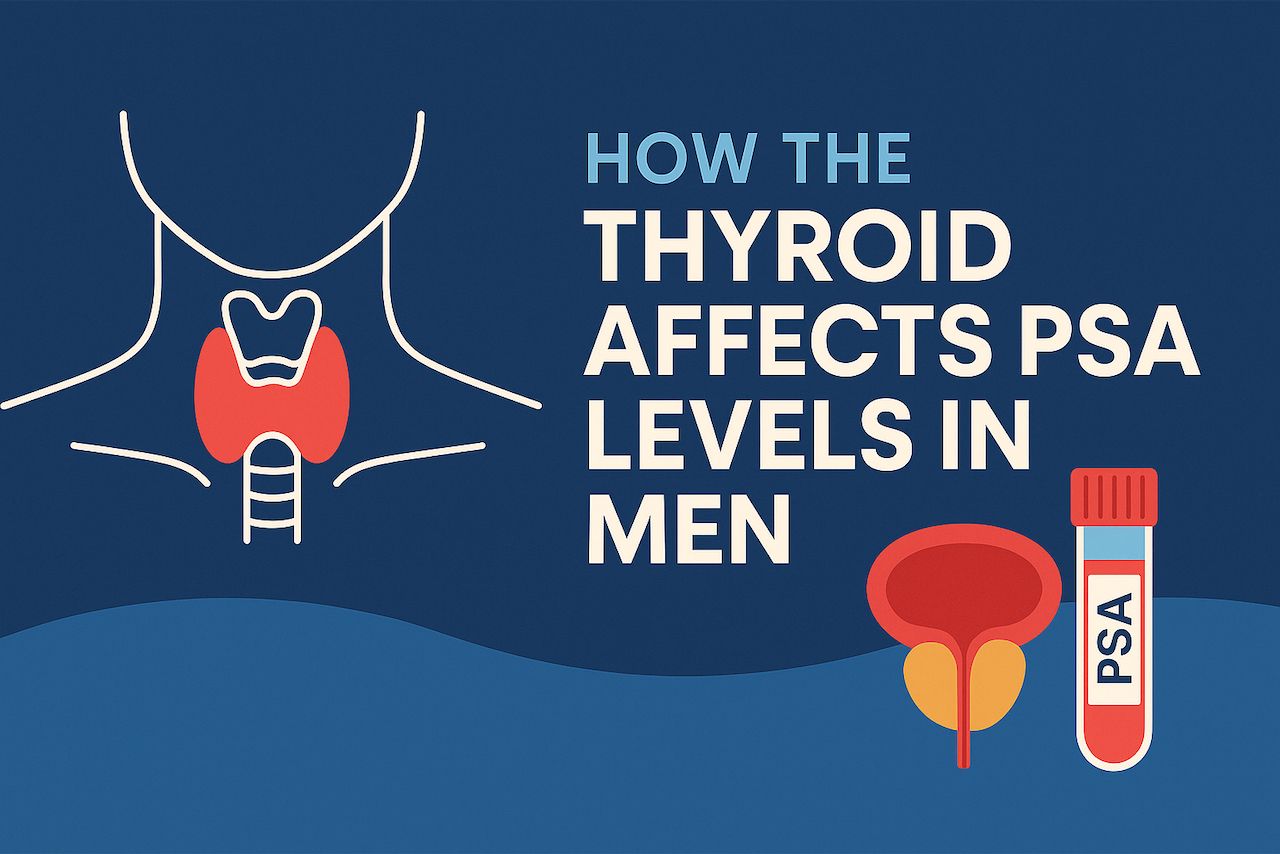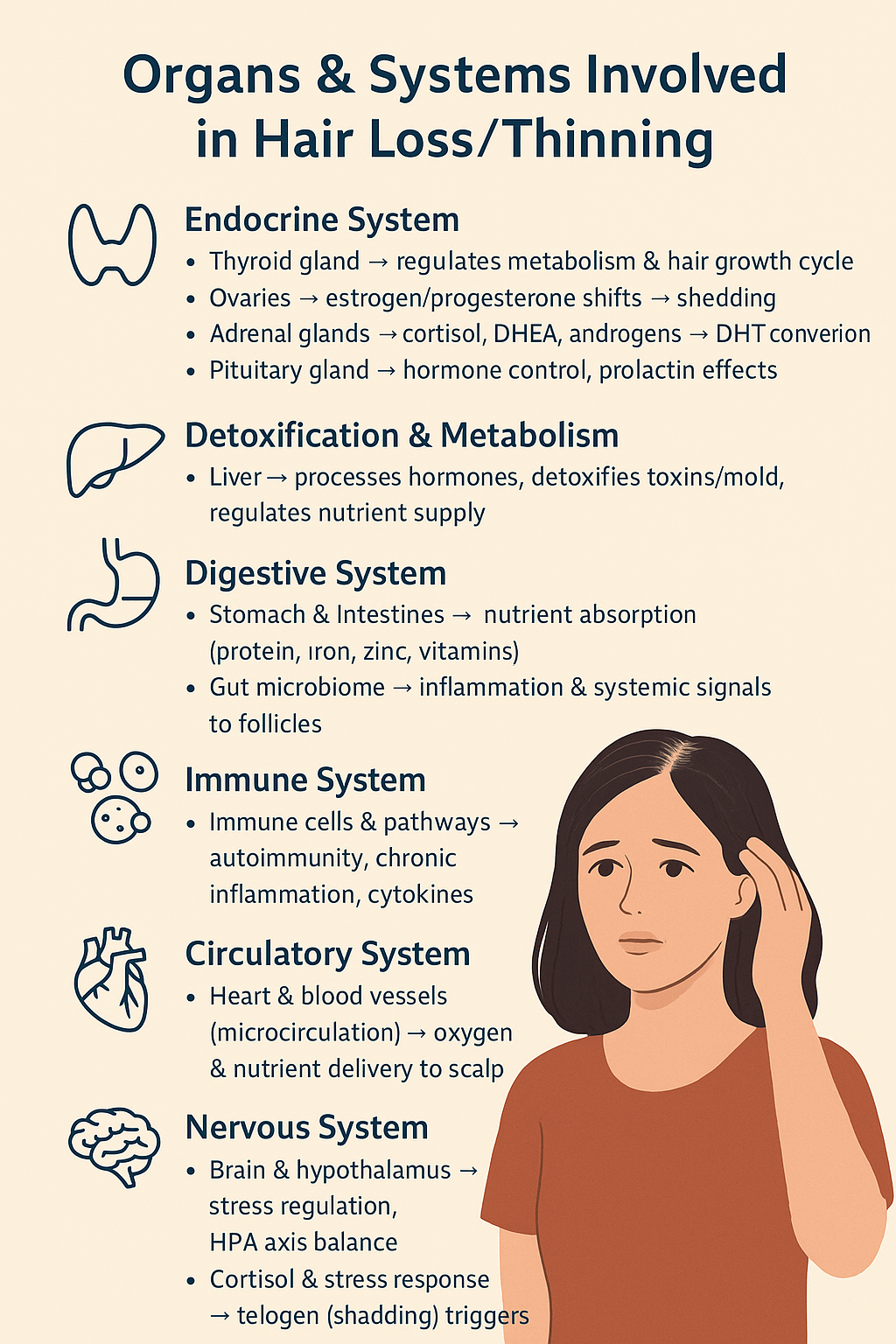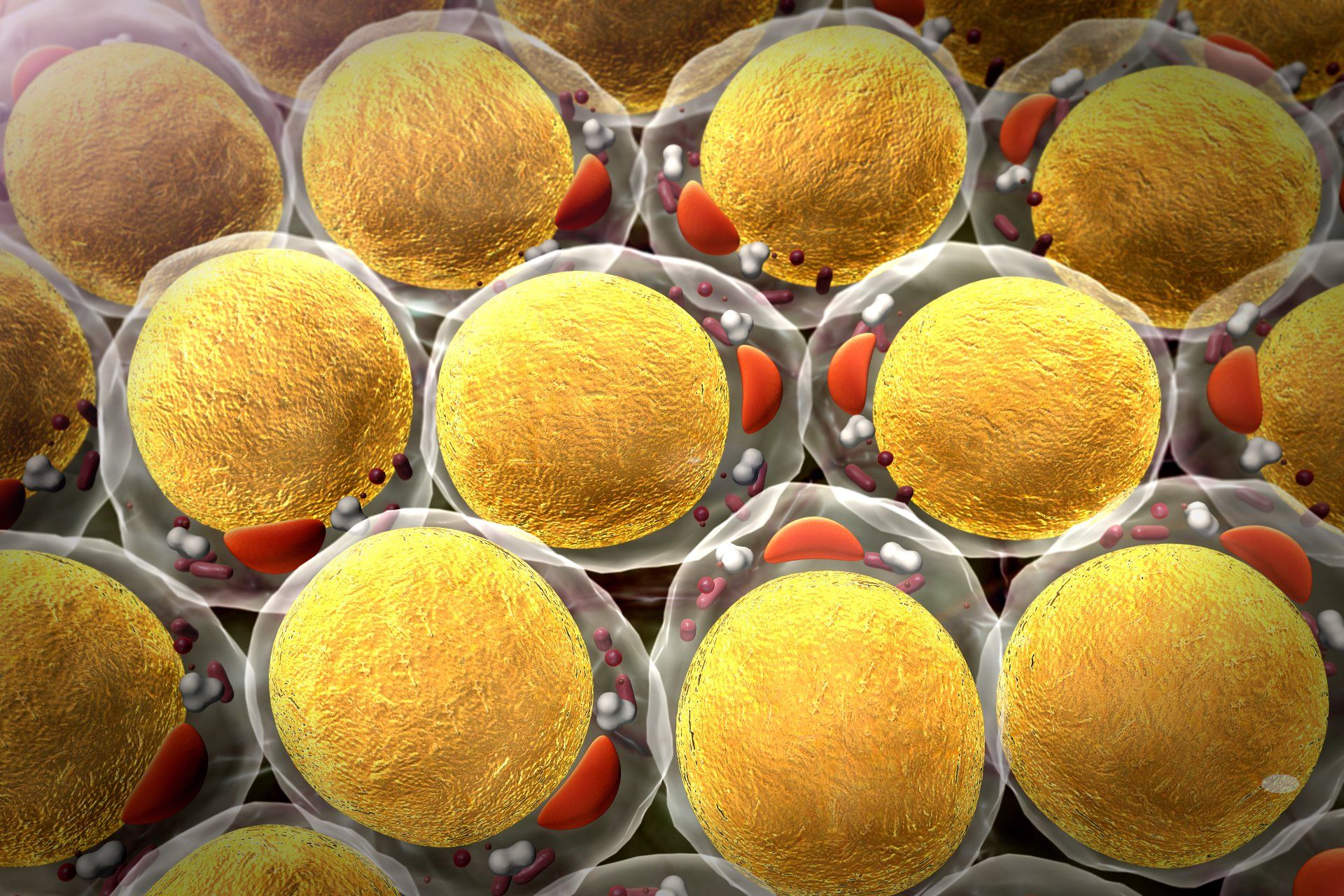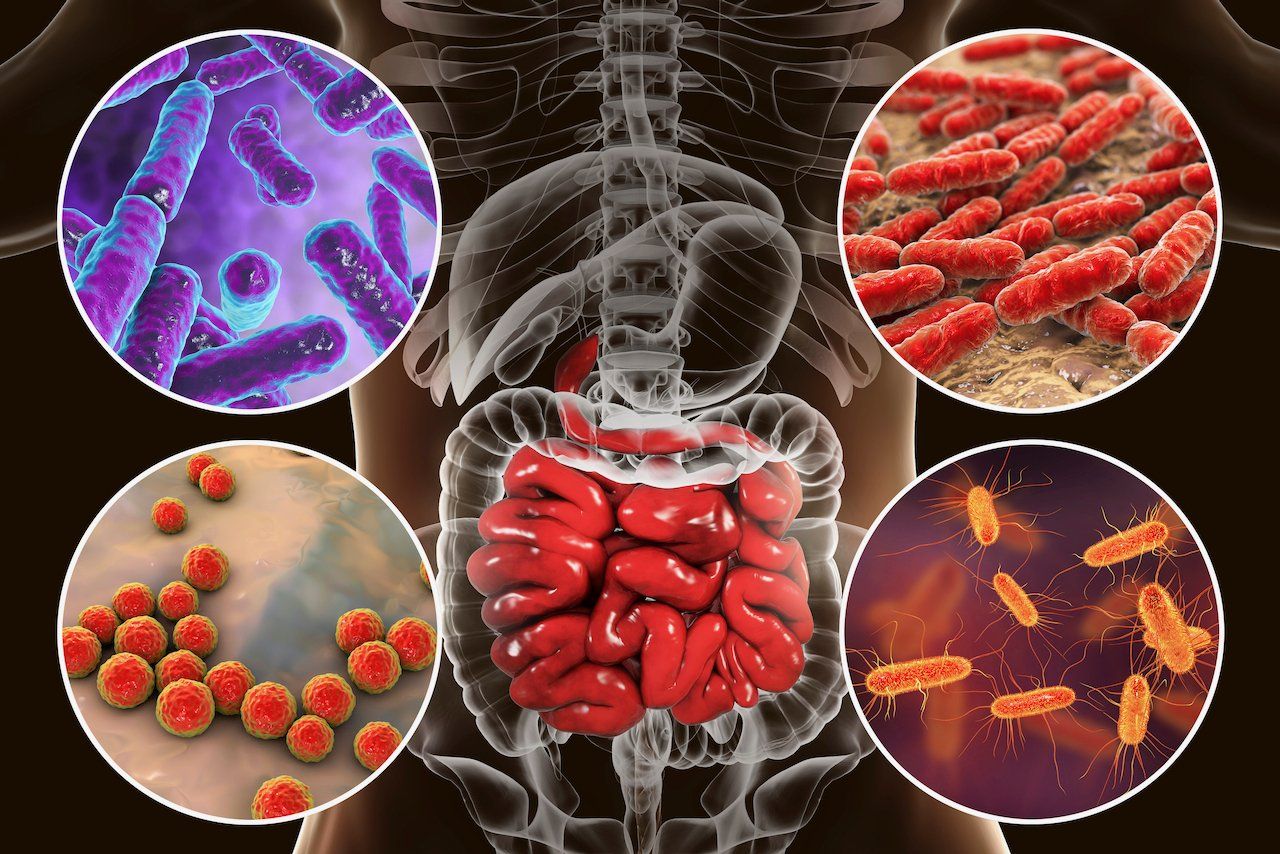Pre-Diabetes: A Functional Medicine and Genomics Lens

Why It Matters
Jane, 45, a working mother of two, thinks her doctor’s warning is just “a little sugar problem.” In truth, she’s in the grip of pre-diabetes—a reversible but dangerous stage that affects one in three American adults. If ignored, pre-diabetes quietly advances toward type 2 diabetes, heart disease, and even cognitive decline, robbing years of health and vitality.
In conventional medicine, pre-diabetes is defined by specific laboratory thresholds:
- Fasting Plasma Glucose (FPG): 100–125 mg/dL after at least 8 hours of fasting (impaired fasting glucose).
- Oral Glucose Tolerance Test (OGTT): 140–199 mg/dL two hours after consuming a 75g glucose solution (impaired glucose tolerance).
- Hemoglobin A1c (HbA1c): 5.7%–6.4%, reflecting average blood sugar levels over the past 2–3 months.
These markers identify individuals at significantly increased risk for type 2 diabetes and cardiovascular disease, even when blood sugars are not yet in the diabetic range.
Building on this understanding, a Functional Medicine approach highlights that pre-diabetes extends beyond blood sugar concerns — it reflects a systems-level imbalance involving the gut, liver, adipose tissue, hormones, inflammation, and circadian rhythms.
Building on this understanding, a Functional Medicine approach highlights that pre-diabetes extends beyond blood sugar concerns—it reflects a systems-level imbalance involving the gut, liver, adipose tissue, hormones, inflammation, and circadian rhythms.
Functional Medicine View: Systems in Play
- Pancreas & Insulin Response
Early insulin resistance forces the pancreas to overproduce insulin just to keep blood sugar “normal.” - Liver & Metabolism
Non-alcoholic fatty liver—a buildup of fat in the liver not caused by alcohol—is often present. The liver loses its ability to adapt its metabolism as needed, disrupting its role in processing toxins, storing glucose (blood sugar), and balancing fats in the body. - Gut & Microbiome
Dysbiosis (an imbalance of gut bacteria) and leaky gut (when the gut lining becomes more permeable than normal) can trigger inflammation throughout the body, making it easier for insulin resistance to worsen and for appetite regulation to be disrupted. - Adipose Tissue & Hormones
Visceral fat—fat stored deep around internal organs—releases signaling proteins called cytokines (for example, IL-6 and TNF-α) that increase inflammation and interfere with how insulin works in the body. - Sleep & Stress Axis
Disrupted cortisol levels—a stress hormone affected by poor sleep and ongoing stress—can make it harder for the body to manage blood sugar over time. - Thyroid and Hormones Thyroid hormones, sex hormones, and cortisol regulate insulin sensitivity and metabolism—when imbalanced, they contribute to inflammation, disrupt glucose control, and increase the risk of prediabetes.
Science Snapshot
- Reversal Potential: Intensive lifestyle interventions can reduce the progression of diabetes by 58% (Diabetes Prevention Program).
- Inflammation Link: Higher levels of blood markers, such as high-sensitivity C-reactive protein (hs-CRP) and interleukin-6 (IL-6), which indicate inflammation, strongly correlate with worsening insulin resistance.
- Microbiome Evidence: A greater variety of gut bacteria and higher levels of a beneficial gut microbe called Akkermansia muciniphila are linked to better blood sugar control.
- Circadian Rhythm: Misaligned eating patterns (late-night meals, shift work) impair insulin sensitivity even in healthy individuals.
Genomics Brief & Pre-Diabetes
Transitioning from clinical markers to genomics, it's essential to note that your DNA is not your destiny—but it can reveal risk pathways. Functional Medicine leverages epigenetics to intervene early in the disease process.
- TCF7L2 → Strongest genetic risk for type 2 diabetes; impacts insulin secretion.
- PPARG → Regulates fat metabolism and insulin sensitivity. Some variants increase inflammatory adipokine release.
- FTO → Associated with obesity, appetite regulation, and IL-6-driven inflammation.
- SLC30A8 → A gene for a zinc transporter protein linked to stress in insulin-producing beta-cells of the pancreas.
- MTHFR Variants → Genetic differences that affect methylation (a process essential for many body functions) and levels of homocysteine, which together influence risk of blood vessel problems.
- IL6 Variants → Influence baseline cytokine load and systemic inflammation.
- TNF-α Polymorphisms → Promote pro-inflammatory states that worsen insulin resistance.
- CRP Variants → Alter baseline inflammation, heightening cardiometabolic risk.
Expanded Functional Medicine Blueprint
TEST → TARGET → TRANSFORM
1. Advanced Lab Assessment
- Glucose & Insulin Regulation
- Fasting glucose, fasting insulin
- HbA1c
- OGTT with insulin curve
- HOMA-IR for insulin resistance mapping
- Lipid & Cardiovascular Risk
- ApoB, LDL particle size, triglyceride/HDL ratio
- Inflammatory & Pro-inflammatory Markers
- hs-CRP, IL-6, TNF-α, ferritin
- Homocysteine (vascular + methylation marker)
- Gut Health
- GI-MAP stool test (dysbiosis, leaky gut, LPS)
- Zonulin (intestinal permeability)
- Nutrient & Hormonal Status
- Magnesium, chromium, vitamin D, zinc
- Cortisol AM/PM rhythm
- Thyroid panel (TSH, free T3/T4, reverse T3)
Lifestyle Interventions
- Nutrition
For breakfast, have oatmeal with berries and flaxseeds. Lunch on grilled salmon and greens with olive oil. Enjoy roasted vegetables with quinoa for dinner.
- Movement
Incorporate regular movement throughout the day. Start your day with a brisk morning walk, followed by a midday HIIT session to boost your energy in the afternoon, and conclude with an evening yoga session to promote relaxation and recovery.
- Sleep & Stress
Conclude your day with calming activities such as mindfulness or reading under soft light. Establish consistent sleep times to support a stable circadian rhythm, promoting restful and restorative sleep.
- HRV training, mindfulness, yoga
- 7–9 hours of restorative sleep aligned with circadian rhythms
3. Targeted Therapeutics
- Anti-inflammatory & insulin sensitizers: berberine, curcumin, resveratrol, quercetin, omega-3s
- Mitochondrial support: alpha-lipoic acid, CoQ10, carnitine
- Gut repair: glutamine, probiotics, prebiotic fibers, polyphenols
- Nutrient repletion: magnesium, vitamin D3+K2, zinc, chromium
4. Precision Nutrition (Genomic-Guided)
- PPARG variants → respond better to higher monounsaturated fats (olive oil, nuts).
- FTO risk → benefit from structured protein intake, satiety-focused nutrition.
- TCF7L2 carriers → require tighter glycemic control and disciplined meal timing.
Key Takeaway
Pre-diabetes is as much an inflammatory condition as a glucose disorder. Elevated markers, such as IL-6, TNF-α, hs-CRP, and ferritin, combined with genomic susceptibility, accelerate disease progression. With the right lens of Functional Medicine and the guidance of Genomics, we can intervene early, reset systems, and transform biology before disease sets in.
As an empowering next step, consider scheduling a fasting glucose and IL-6 test this week to take control of your health. Early awareness can be the key to preventing the progression to type 2 diabetes.
Your health isn’t random. It’s written in code. Every cell in your body carries a script. Your genes don’t just predict your future—they respond to what you eat, how you move, and the choices you make daily. That’s the journey I share in “Understanding Genomics: How Nutrition, Supplements, and Lifestyle Can Help You Unlock Your Genetic Superpowers”.
Read the code. Live the design. The rest follows.
Dr. Marios Michael
Medical Disclaimer: The information included on this blog is for educational purposes only. It is not intended nor implied to be a substitute for professional medical advice. The reader should always consult his or her healthcare provider to determine the appropriateness of the information for their own situation or if they have any questions regarding a medical condition or treatment plan. Never disregard professional medical advice or delay in seeking it because of something you have read on this blog! Reading the information on this blog does not create a physician-patient relationship.
These statements have not been evaluated by the Food and Drug Administration. This product is not intended to diagnose, treat, cure, or prevent any disease.
References: Supporting Evidence
1. Diabetes Prevention Program Research Group. Reduction in the incidence of type 2 diabetes with lifestyle intervention or metformin. N Engl J Med. 2002;346(6):393-403.
2. Pradhan AD, Manson JE, Rifai N, Buring JE, Ridker PM. C-reactive protein, interleukin 6, and risk of developing type 2 diabetes mellitus. JAMA. 2001;286(3):327-334.
3. Qin J, Li Y, Cai Z, et al. A metagenome-wide association study of gut microbiota in type 2 diabetes. Nature. 2012;490(7418):55-60.
4. Dao MC, Everard A, Aron-Wisnewsky J, et al. Akkermansia muciniphila and improved metabolic health during a dietary intervention in obesity: relationship with gut microbiome richness and ecology. Gut. 2016;65(3):426-436.
5. Scheer FAJL, Hilton MF, Mantzoros CS, Shea SA. Adverse metabolic and cardiovascular consequences of circadian misalignment. Proc Natl Acad Sci U S A. 2009;106(11):4453-4458.
6. Lyssenko V, Jonsson A, Almgren P, et al. Clinical risk factors, DNA variants, and the development of type 2 diabetes. N Engl J Med. 2008;359(21):2220-2232.
7. Barroso I, Gurnell M, Crowley VE, et al. Dominant negative mutations in human PPARγ associated with severe insulin resistance, diabetes mellitus and hypertension. Nature. 1999;402(6764):880-883.
8. Frayling TM, Timpson NJ, Weedon MN, et al. A common variant in the FTO gene is associated with body mass index and predisposes to childhood and adult obesity. Science. 2007;316(5826):889-894.
9. Sladek R, Rocheleau G, Rung J, et al. A genome-wide association study identifies novel risk loci for type 2 diabetes. Nature. 2007;445(7130):881-885.
10. Frosst P, Blom HJ, Milos R, et al. A candidate genetic risk factor for vascular disease: a common mutation in methylenetetrahydrofolate reductase. Nat Genet. 1995;10(1):111-113.
11. Fishman D, Faulds G, Jeffery R, et al. The effect of novel polymorphisms in the interleukin-6 (IL-6) gene on IL-6 transcription and plasma IL-6 levels, and an association with systemic-onset juvenile chronic arthritis. J Clin Invest. 1998;102(7):1369-1376.
12. Uysal KT, Wiesbrock SM, Hotamisligil GS. Functional analysis of tumor necrosis factor (TNF) receptors in TNF-induced insulin resistance in genetic obesity. J Clin Invest. 1998;102(2):402-410.
13. Ridker PM, Buring JE, Cook NR, Rifai N. C-reactive protein, the metabolic syndrome, and risk of incident cardiovascular events: an 8-year follow-up of 14,719 initially healthy American women. Circulation. 2003;107(3):391-397.
14. American Diabetes Association. 2. Classification and Diagnosis of Diabetes: Standards of Medical Care in Diabetes—2024. Diabetes Care. 2024;47(Supplement_1):S19-S38. doi:10.2337/dc24-S002











